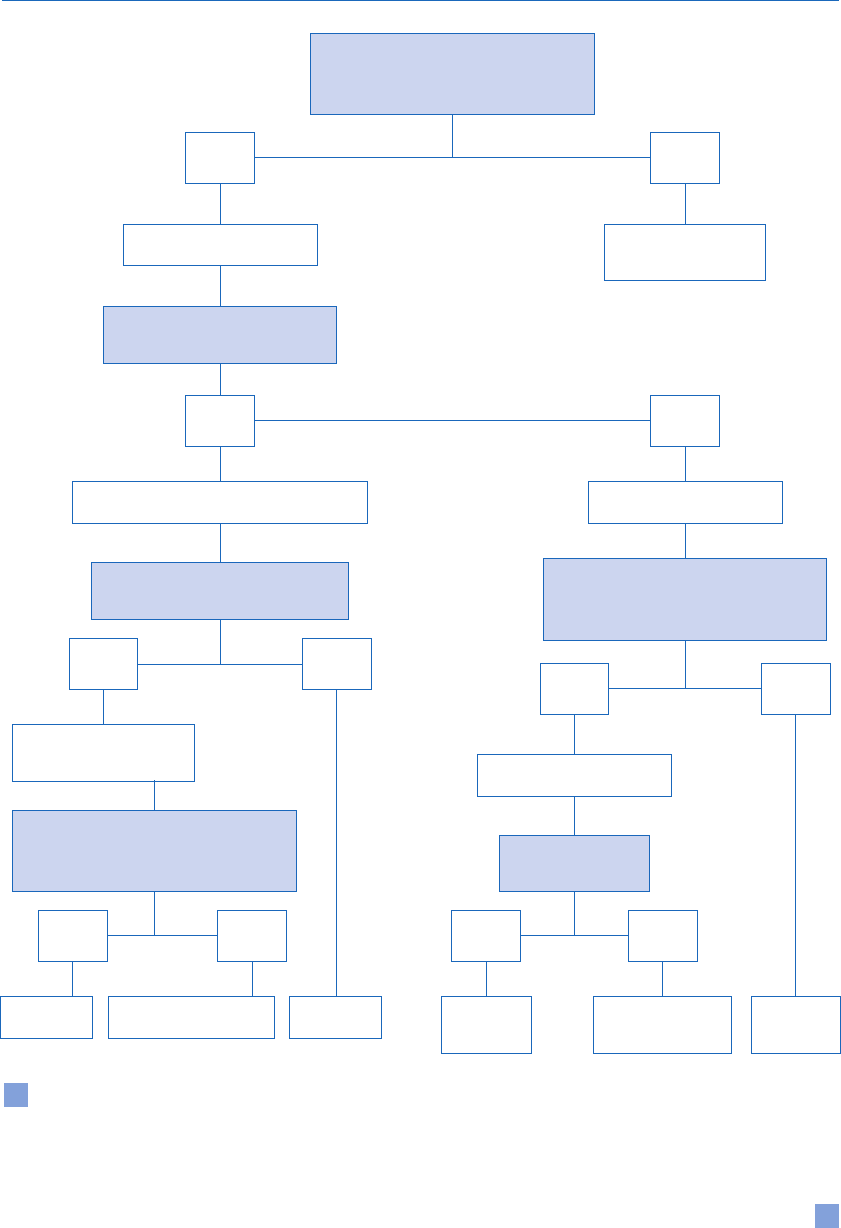Onkvisit S., Shaw J. International Marketing: Analysis and Strategy
Подождите немного. Документ загружается.


Countertrade, one of the oldest forms of trade, is a
government mandate to pay for goods and services
with something other than cash. It is a practice
which requires a seller, as a condition of sale, to
commit contractually to reciprocate and undertake
certain business initiatives that compensate and
benefit the buyer. In short, a goods-for-goods deal
is countertrade.
Unlike monetary trade, suppliers are required to
take customers’ products for their use or for resale.
In most cases these are multiple deals that are
496
TERMS OF SALE AND PAYMENT
PURPOSE OF CHAPTER
The trade practices of Asian countries (e.g., Malaysia, Indonesia) and Eastern/Central European countries
illustrate the fact that money is not the only means of payment.Due to the fact that many Eastern European
countries and less developed nations often lack hard currency, they resort to alternative pricing mecha-
nisms. International marketers may thus be forced to enter into some kind of countertrade scheme so as
to do business with those countries. Although countertrade may be complex and time-consuming, it is man-
ageable. A section of this chapter is devoted to the examination of countertrade as an alternative method
of trading. The various types of countertrade are discussed.
Another section of this chapter deals with pricing terms used in international quotations. To be com-
petitive, it is the job of a responsible exporter to provide a quotation that is complete and meaningful. It
is important for both the buyer and the seller to specify and know the point of delivery where risk shifts
from one party to another. A poorly prepared quotation results in confusion and possibly a loss of sale.
Finally, the chapter ends with a review of payment methods. The different payment methods involve a
certain degree of financing and risk. It is thus critical to specify the timing and means of payment that are
satisfactory to both parties. A misunderstanding regarding delivery terms may cause an exporter to become
responsible for unintended shipping costs. To make the matter worse, by unknowingly failing to meet
contractual obligations, the exporter may not be able to collect payment. While certain safeguards are
necessary, they should not be so cumbersome or costly as to deter business.
Malaysia’s 15 billion ringgit ($3.95 billion) plan aims
to expand and electrify 635 kilometers of railway that
runs down the spine of Malaysia Peninsular. Most of
the project will be financed by barter trade. The
country will use palm oil to pay Indian and Chinese
state-owned railway companies for more than 10
billion ringgit in construction contracts. Funds from
palm oil sales are put in a special account and will be
paid out to Indian and Chinese contractors as
progress payments on the railway job. In the 1990s,
Malaysia also used palm oil to buy Russian-built
combat planes. Just like Malaysia, many Asian and
Eastern and Central European countries have done
countertrade deals. Thailand, for example, has
exchanged 200,000 tons of 15-percent broken rice for
such Indonesian goods as aircraft, freight-train car-
riages, and ammonia. Indonesia, being cash-strapped,
set up a countertrade agreement with Russia in 2003.
In order to get four Sukhoi Su-30 fighter jets, four
helicopters, and spare parts, Indonesia agreed to trade
palm oil, tea, coffee, and fifteen other commodities.
The deal was worth $150 million to $175 million.
Sources:
“Indonesia Reportedly to Deal Goods for Arms,”
San José Mercury News
, April 11, 2003.
MARKETING ILLUSTRATION NONCASH TRADE
COUNTERTRADE

separate yet related, and a contract links these sepa-
rable transactions. Countertrade may involve several
products, and such products may move at different
points in time while involving several countries.
Monetary payments may or may not be part of the
deal.
There are three primary reasons for countertrade:
(1) countertrade provides a trade financing alterna-
tive to those countries that have international debt
and liquidity problems, (2) countertrade relation-
ships may provide developing countries and MNCs
with access to new markets, and (3) countertrade
fits well conceptually with the resurgence of bilat-
eral trade agreements between governments.
1
The
advantages of countertrade cluster around three sub-
jects: market access, foreign exchange, and pricing.
Table 17.1 lists potential motives for countertrade.
Countertrade offers several advantages. It moves
inventory for both a buyer and a seller. The seller
gains other benefits, too. Other than the tax advan-
tage,the seller is able to sell the product at full price
and can convert the inventory to an account receiv-
able.The cash-tight buyer that lacks hard currency
is able to use any cash received for other operating
purposes.
Countertrade constitutes an estimated 5 to 30
percent of total world trade. Countertrade greatly
proliferated in the 1980s. Perhaps the single most
important contributing factor is LDCs’ decreasing
ability to finance their import needs through bank
loans.
Regarding Russia, its officials have estimated that
90 percent or more of the transactions having to do
with “critical imports” involve reciprocal trade
exchanges. Countertrade in Russia may proliferate
because, with the Russian banking system in disar-
ray, it is difficult to arrange traditional export
financing (e.g., letter of credit). Noncash forms of
payment may account for as much as two-thirds
of all transactions in Russia.There are thousands of
intermediaries acting as barter specialists. One
deal involves a governor paying for a $17 million
airplane by trading gas paid to his government in
lieu of energy royalties, giving a middleman com-
mission of 10 percent. Velta Co., once one of the
Soviet Union’s biggest bicycle makers, stays in
business by swapping its bicycles for raw materials
and electric power.The company’s 4000 employees
have to accept one bicycle a month in lieu of a
paycheck.
2
1111
2
3
4
5
6
7
8
9
10111
1
2
3
4
5
6
7
8
9
20111
1
2
3
4
5
6
7
8
9
30
1
2
3
4
5
6
7
8
9
40
41
42
43
44
45111
497
TERMS OF SALE AND PAYMENT
Table 17.1 Potential motives for countertrade
Types of countertrade
BT
1
CA/ST
2
CP
3
BB
4
OF
5
Avoids using foreign exchange Yes Yes No Rarely No
Avoids repayment of external debt Yes Yes No No No
Hides price discounts Yes Yes No No No
Shifts risk Yes Yes Yes Yes Sometimes
Substitute for foreign direct investment No No Yes Yes Yes
Political factors dominant No Yes No No Yes
Notes
1 BT Barter
2 CA/ST Clearing arrangement/switch trading
3 CP Counterpurchase
4 BB Buyback
5 OF Offset
Source:
Jean-François Hennart, “Some Empirical Dimensions of Countertrade,”
Journal of International Business Studies
21
(No. 2, 1990): 248.

Russia is a virtual economy dominated by barter,
mutual nonpayment, and money surrogates, such
as promissory notes (veksel), and tax authori-
ties have been forced to collect in-kind tax pay-
ments. Countertrade is a consequence of failures in
corporate governance. In this regard, countertrade
is both a means of avoiding payment of private or
public debts in cash and a way of concealing the real
state of affairs – not only from tax authorities but
also from minority shareholders and employees.
Noncash settlements make it possible for owner-
managers to degrade assets and divert cash flows in
a less transparent way.
3
Countertrade is pervasive in Russia for a number
of reasons. Direct subsidies to enterprises were cut
and demand for many industrial products fell after
price and trade liberalization. The ensuring credit
crunch could not be solved by banks because bank
lending to enterprises is very limited. As a result,
the enterprises ran up arrears to suppliers and
finally used offsets to settle these arrears.The state
itself also fostered the noncash economy by allow-
ing tax offsets. The federal and local governments
accepted goods in lieu of tax payments, and state
utilities also accepted most of their receipts in kind.
4
Noncash transactions, by substituting for trade
and bank credit, help firms to survive in a credit-
constrained environment. In the case of time-lagged
nonmonetary deals, an enterprise essentially enjoys
a credit from its partner because a payment does not
have to be made until later. Even in the case of a
spot barter, a seller is forced to accept either goods
now or money later, being mindful of the fact that
“later” may turn out to be “never.” This artificial
demand allows goods to be produced by the old-
style, inefficient enterprises that should have gone
out of business.
5
Because of the nontransparent nature of coun-
tertrade, there are implicit subsidies from the state
in the form of tax offsets which amount to tax dis-
counts. Because barter prices are arbitrary, tax
evasion is facilitated. In addition, by allowing ineffi-
cient enterprises to remain, countertrade acts as an
entry barrier for new firms.There is a vicious cycle:
barter makes it harder to screen firms and monitor
their performance. As their access to bank credit is
further reduced, they have to barter even more.
Types of countertrade
There are several types of countertrade, including
barter, counterpurchase, compensation trade,
switch trading, offsets, and clearing agreements.
Figure 17.1 provides a classification of countertrade.
Barter
Barter, possibly the simplest of the many types of
countertrade, is a one-time direct and simultaneous
exchange of products of equal value (i.e., one
product for another). By removing money as a
medium of exchange, barter makes it possible for
cash-tight countries to buy and sell. Although price
must be considered in any countertrade, price is
only implicit at best in the case of barter. For
example, Chinese coal was exchanged for the con-
struction of a seaport by the Dutch, and Polish coal
was exchanged for concerts given by a Swedish band
in Poland. In these cases, the agreement dealt with
how many tons of coal were to be given by China
and Poland rather than the actual monetary value of
the construction project or concerts. It is estimated
that about half of US corporations engage in some
form of barter, primarily within the local markets
of the USA.
Counterpurchase (parallel barter)
Counterpurchase occurs when there are two con-
tracts or a set of parallel cash sales agreements, each
paid in cash. Unlike barter, which is a single trans-
action with an exchange price only implied, a coun-
terpurchase involves two separate transactions –
each with its own cash value.A supplier sells a facil-
ity or product at a set price and orders unrelated on
nonresultant products to offset the cost to the initial
buyer. Thus the buyer pays with hard currency,
whereas the supplier agrees to buy certain products
within a specified period. Therefore, money does
not need to change hands. In effect, the practice
498
TERMS OF SALE AND PAYMENT

1111
2
3
4
5
6
7
8
9
10111
1
2
3
4
5
6
7
8
9
20111
1
2
3
4
5
6
7
8
9
30
1
2
3
4
5
6
7
8
9
40
41
42
43
44
45111
499
TERMS OF SALE AND PAYMENT
Buyback Counterpurchase Offset
Clearing arrangement
Barter-type
Countertrade
Counterpurchase, buyback or offset
No Yes
Switch
trading
Are third parties
involved?
Buyback and
Counterpurchase
No
Clearing
arrangements
Simple
barter
Yes
Are the goods taken back
by the exporter the resultant
output of the equipment sold?
Does the transaction extend
over long time periods and
involve a basket of goods?
Does the transaction
involve reciprocal commitments?
(other than cash payments)
Yes
NoYes
No
NoYes
Yes No
Reciprocal commitment limited
to purchase of goods?
Does the transaction
involve the use of money?
Straight sales
(cash or credit)
Figure 17.1 Classification of forms of countertrade
Source:
Jean-François Hennart, “Empirical Dimensions,” 245.

allows the original buyer to earn back the currency.
GE won a contract worth $300 million to build air-
craft engines for Sweden’s JAS fighters for cash only
after agreeing to buy Swedish industrial products
over a period of time in the same amount through
a counterpurchase deal. Iraq persuaded the New
Zealand Meat Board to sell $200 million worth
of frozen lamb for a purchase of the same value of
crude oil. Brazil exports vehicles, steel, and farm
products to oil-producing countries from whom it
buys oil in return.
Compensation trade (buyback)
A compensation trade requires a company to
provide machinery, factories, or technology and
to buy products made from this machinery over
an agreed period. Unlike counterpurchase, which
involves two unrelated products, the two contracts
in a compensation trade are highly related. Under a
separate agreement to the sale of plant or equip-
ment, a supplier agrees to buy part of the plant’s
output for a number of years. For example, a
Japanese company sold sewing machines to China
and received payment in the form of 300,000 pairs
of pajamas. Russia welcomes buyback.
Switch trading
Switch trading involves a triangular rather than
bilateral trade agreement.When goods, all or part,
from the buying country are not easily usable or
saleable, it may be necessary to bring in a third party
to dispose of the merchandise.The third party pays
hard currency for the unwanted merchandise at
a considerable discount. A hypothetical example
could involve Italy having a credit of $4 million for
Austria’s hams, which Italy cannot use.A third-party
company may decide to sell Italy some desired
merchandise worth $3 million for a claim on the
Austrian hams. The price differential or margin is
accepted as being necessary to cover the costs of
doing business this way. The company can then sell
the acquired hams to Switzerland for Swiss francs,
which are freely convertible to dollars.
Offset
In an offset, a foreign supplier is required to manu-
facture/assemble the product locally and/or pur-
chase local components as an exchange for the
right to sell its products locally. In effect, the sup-
plier has to manufacture at a location that may not
be optimal from an economic standpoint. Offsets
are often found in purchases of aircraft and military
equipment. One study found that more than half of
the companies countertrading with the Middle East
were in the defense industry and that the most
common type of countertrade was offset.
6
These
companies felt that countertrade was a required
element in order to enter these markets.
Clearing agreement
A clearing agreement is a clearing account barter
with no currency transaction required.With a line
of credit being established in the central banks of the
two countries, the trade in this case is continuous,
and the exchange of products between two govern-
ments is designed to achieve an agreed value or
volume of trade tabulated or calculated in noncon-
vertible “clearing account units.” For example, the
former Soviet Union’s rationing of hard currency
limited imports and payment of copiers. Rank
Xerox decided to circumvent the problem by
making copiers in India for sale to the Soviets under
the country’s “clearing” agreement with India. The
contract set forth goods, ratio of exchange,and time
length for completion.Any imbalances after the end
of the year were settled by credit into the next year,
acceptance of unwanted goods, payment of penalty,
or hard currency payment. Although nonconvert-
ible in theory, clearing units in practice may be sold
at a discount to trading specialists who use them to
buy saleable products.
Problems and opportunities
Although countertrade is a common and growing
practice, it has been criticized on several fronts.
First, countertrade is considered by some to be a
form of protectionism that poses a new threat to
500
TERMS OF SALE AND PAYMENT

world trade. Such countries as Sweden, Australia,
Spain, Brazil, Indonesia, and much of Eastern
Europe demand reciprocity in order to impose a
discipline on their balance of payments. In other
words, imports must be offset by exports.Indonesia
links government import requirements in contracts
worth more than Rp. 500 million to the export of
Indonesia products, other than oil and natural gas,
in an equivalent amount to the foreign-exchange
value of the contract.
Second, countertrade is alleged to be nothing but
“covert dumping.” To compensate any supplying
partners for the nuisance of taking another product
as payment, a countertrading country frequently
trades its products away at a discount. If the coun-
tertrading country discounts directly by selling its
goods itself in another market instead of through
a foreign firm, dumping would clearly occur, but,
according to an International Trade Commission
study, the practice does not seem to be harmful to
the USA. Countertrade activity actually results in
US exports always greatly exceeding the value of
imports. Thus it would appear that many products
which US firms agree to take from their customers
for overseas marketing are not dumped back on the
US market.
Third, countertrade is alleged to increase over-
head costs and ultimately the price of a product.
Countertrade involves time,personnel, and expense
in selling a customer’s product – often at a discount.
If another middleman is used to dispose of the prod-
uct, a commission must also be paid. Because of
these expenses, a selling company has to raise the
price of the original order to compensate for such
expenses as well as for the risk of taking another
product in return as payment. The fact that the
goods are saleable – either for other goods or, in
the end, for cash somewhere else – means that
additional and probably unnecessary costs will be
incurred.As explained by Fitzgerald,“Countertrade
requirements, like any trade restrictions, increase
the cost of doing business. These costs cannot be
passed into the international market but must
be borne within the country imposing the require-
ments.”
7
It is believed that barter transactions are
responsible for reducing Russia’s revenues by 500
billion rubles.
8
Related to this charge of increasing costs is the
problem of marketing unwanted merchandise
that may remain unsold. A company may have to
take on the added job of marketing its customer’s
goods if it does not want to lose business to rivals
who are willing to do so. McDonnell Douglas
was able to secure a contract to sell 250 planes
to former Yugoslavia only after agreeing to market
such Yugoslav goods as hams and other foods, tex-
tiles, leather goods, wine, beer, mineral water, and
tours. The company had a difficult time selling
the $5 million worth of hams and finally did so
to its own employees and suppliers. With regard
to the Yugoslavian tours, the best the company
could do was to offer the trips as incentives to
employees.
Financing, essential in virtually all types of con-
ventional transactions, becomes more complicated
in the case of countertrade. This is especially
true when the sale of one product is contingent on
the purchase of an unrelated product in return.
Understandably, banks may hesitate to provide
credit for such a deal because of their concern that
the exporter may not be able to profitably dispose
of the product given to the exporter as payment.
When a company is unable or does not want to
be concerned with disposing of the product taken
from its customer, it can turn to companies that act
as intermediaries.The intermediaries may agree to
dispose of the merchandise for a commission or they
may agree to buy the goods outright.The Mediators
is one such middleman organization which operates
a $500 million a year business globally.
An examination of countertrade literature found
that an overwhelming number of the published arti-
cles were theoretical rather than empirical.
9
There
are a few empirical studies, however, that have shed
some light on the practice of countertrade.Accord-
ing to one model, developing countries which
impose countertrade have the following characteris-
tics: declining foreign exchange reserves, commod-
ity terms of trade, balance of trade, and increasing
debt service ratios.There is some evidence that these
1111
2
3
4
5
6
7
8
9
10111
1
2
3
4
5
6
7
8
9
20111
1
2
3
4
5
6
7
8
9
30
1
2
3
4
5
6
7
8
9
40
41
42
43
44
45111
501
TERMS OF SALE AND PAYMENT

variables can help exporters identify those countries
which are likely to be countertraders.
10
The results of one study dispel some widely held
views about countertrade. First, the relationship
between a country’s credit rating and its propensity
to countertrade is not as strong as commonly
believed. Second, buyback and counterpurchase are
substitutes for foreign direct investment. Third,
there is a surprisingly large volume of countertrade
between developing countries themselves. Fourth,
each countertrade type seems to have its own sep-
arate motivation (see Table 17.1). Barter allows
exchange without the use of money and explicit
prices. Barter is therefore useful in order to bypass:
(1) exchange controls, (2) public or private price
controls, and (3) a creditor’s monitoring of
imports.
11
Those firms that tend to benefit from counter-
trade are the following: (1) large firms that have
extensive trade operations from large, complex
products; (2) vertically integrated firms that can
accommodate countertrade takebacks; and (3) firms
which trade with countries that have inappropriate
exchange rates, rationed foreign exchange, import
restrictions, and importers inexperienced in assess-
ing technology or in export marketing. In contrast,
firms whose characteristics are the opposite of those
enumerated above are likely to encounter significant
barriers to countertrade operations and to receive
few benefits.
12
In general, the US government is opposed
to government-mandated countertrade. However,
recognizing that countertrade is a fact of life, the
US government has maintained a hands-off policy
toward countertrade arrangements that do not
have government intervention or that American
exporters choose to pursue. It does not oppose
participation by American firms in countertrade
transactions when they do not have a negative
impact on national security, but the US policy pro-
hibits federal agencies from promoting counter-
trade in their business and official contacts.
13
Interestingly, the US government itself has
published a guide on countertrade practices so
that US firms may take advantage of marketing
opportunities in the former Soviet Union.
14
The
irony is that the Russian government, seeking hard
currency earnings, now appears to prefer cash
transactions and has begun to discourage counter-
trade transactions of marketable commodities.
However, those Russian products that do not have a
ready market will probably still require some form
of countertrade.
There is no question that countertrade is a
cumbersome process: yet a firm is unwise not to
consider it. Similar to other trade practices, coun-
tertrade presents both problems and opportunities.
More often than not, problems of countertrade are
psychological rather than real obstacles. Problems
may be overcome. One need only remember that in
the final analysis all goods can be converted into
cash.
PRICE QUOTATON
A quotation describes a specific product, states the
price for that product as well as a specified delivery
location, sets the time of shipment, and specifies
payment terms. When a company receives an
inquiry from abroad, the quotation must be very
detailed in terms of weight, volume, and so on
because of the customer’s unfamiliarity with foreign
products, places, and terms. Since the time of ship-
ment is crucial, the prepared quotation should spec-
ify whether the time mentioned is from the factory
or the port of export and whether it includes the
estimated inland transit time. Furthermore, price
quotations should state explicitly that they are sub-
ject to change without notice. It is a good idea to
specify the precise period during which a specific
price or offer remains valid.
Because it is often requested by a buyer, a pro
forma invoice may have to be prepared and sup-
plied with or instead of the quotation. Even when it
is not requested, it is still good business practice to
include it with any international quotation.This type
of invoice is not for payment purposes; it is essen-
tially a quotation in an invoice format. The buyer
uses it to apply for an import license or to arrange
for funds.A pro forma invoice should be conspicu-
502
TERMS OF SALE AND PAYMENT

ously marked “pro forma invoice,” and it should
include a statement certifying that the pro forma
invoice is true and correct as well as a statement
describing the country of origin of the products.
TERMS OF SALE
Trade terms
The quotation must include terms of sale. In the
USA, it is customary to ship FOB factory, freight
collect, or COD. Such terms, however, are inap-
propriate for international business, and other
terms such as EXW, FAS, FOB, CFR, CIF, DEQ,
and DDP should be used instead.
All companies should use Incoterms which are a
set of international rules used to interpret the most
common terms in foreign trade. Developed under
the auspices of the International Chamber of
Commerce,Incoterms are recognized by the United
Nations Commission on International Trade Law as
a global standard. By defining the responsibilities
of buyers and sellers for delivery of goods under
sales contracts, the use of Incoterms reduces uncer-
tainties by eliminating varying interpretations of
foreign trade terms. Because there are several ver-
sions of Incoterms, the seller should clearly refer to
Incoterms 2000 whenever the terms are used (e.g.,
FOB London Incoterms 2000).
15
Incoterms have four basic categories.The E terms
are used when seller will make goods available to the
buyer on the seller’s own premises.F terms are used
when the seller will be required to deliver goods to
a carrier appointed by the buyer. C terms are used
when the seller will be required to contract for car-
riage, but will not assume risk of loss or damage to
goods, or of additional costs that may occur after
shipment and dispatch. Finally, D terms require the
seller to bear all costs and risks needed to bring
goods to the place of destination. In general,
Incoterms base the interpretations on the party who
is best equipped to handle the task. For example,
loading and unloading obligations have been shifted
to the seller under the free carrier seller’s place
term because this shipment is being unloaded at
the seller’s place and because the seller will have
personnel and equipment available to load.
Table 17.2 describes the point of delivery and
risk shift for these different terms of sale. These
terms are discussed next.
Ex works (EXW) or ex – named point of
origin
Ex means from, and the price quoted is calculated
from the point of origin.There are several variations
of this term, and they include ex factory, ex warehouse,
ex mill, ex plantation, and ex mine. Under these terms,
the seller makes goods available to the buyer at a
specific time and place, usually at the seller’s place
of business or warehouse.The buyer takes delivery
at the seller’s premises and bears all risks and
expenses from that point on.
FAS – named port of shipment
FAS stands for free alongside ship. Under this term,
the price includes delivery of goods along side the
1111
2
3
4
5
6
7
8
9
10111
1
2
3
4
5
6
7
8
9
20111
1
2
3
4
5
6
7
8
9
30
1
2
3
4
5
6
7
8
9
40
41
42
43
44
45111
503
TERMS OF SALE AND PAYMENT
Table 17.2 Point of delivery and where risk shifts from seller to buyer
EXW FAS FOB CFR CIF DEQ DDP
Supplier’s warehouse X
Export dock X
On board vessel X X X
Import dock X
Buyer’s warehouse X
Main transit insurance risk on Buyer Buyer Buyer Buyer Seller Seller Seller

vessel or other mode of transportation, and the
seller pays all charges up to that point. This term
does not include the cost of loading. It is customary
to use the port of export as the point of origin for
this transaction.The seller’s legal responsibility ends
once it has obtained a clear wharfage receipt.A sig-
nificant change should be noted. Under Incoterms
2000, the seller is required to clear the goods for
export. Previous Incoterms versions required the
buyer to arrange for export clearance.
FOB – named point
FOB stands for free on board. Like the other terms
within the quotation, the point where the price is
applicable must be mentioned.There are a number
of classes, and the point in question may be any one
of these: the named inland carrier at the named
inland point of departure, the named inland carrier
at the named point of exportation, the named port
of shipment, and the named inland point in the
country of importation.
Nevertheless, the point used for quotation is
usually the port of export. In such a case, the price
includes local delivery and loading. The seller’s
responsibility does not end until goods have actually
been placed aboard the ship and a bill of lading
issued. The buyer arranges for overseas trans-
portation and bears all costs and risks from the
time the goods are placed on board (i.e., passes
the ship’s rail).
CFR – to named point of destination
CFR stands for cost and freight. Usually, this term
will name the overseas port of import as the point
in question.The price generally includes the cost of
transportation to the named point of debarkation.
The buyer, in turn, is expected to pay for insurance.
Like FOB, the risk of loss or damage to the goods
is transferred from the seller to the buyer when the
goods pass the ship’s rail.
CIF – to named point of destination
CIF stands for cost, insurance, and freight. Again, the
point used for quotation may be any location, but
the International Chamber of Commerce recom-
mends that this point should be the destination.The
CIF price includes the cost of goods, insurance, and
all transportation charges to the point of debarka-
tion (destination). The delivery costs are thus
extended beyond the country of export. Although
the price covers more items or activities than
FOB, the seller’s obligations still end at the same
stage (i.e., when goods are aboard or loaded).The
seller pays for insurance, and the seller’s insurance
company assumes responsibility once the goods
are loaded. Firms exporting to the EU should note
that duties are imposed on the CIF value of the
shipment.
Delivered ex quay (DEQ) – named port of
destination
The seller is required to deliver the goods to the
quay at the predefined port of destination and clear
them for importation.The seller must also take on
all risks and costs including duties, taxes, and any
other charges.To avoid confusion, the term should
mention either “duty paid” or “duty unpaid.”
DDP – delivered duty paid
An example of this kind of quotation is “duty paid
landed US.” With the payment of this price, the
seller undertakes the delivery of goods to the place
named in the country of import, generally the
buyer’s warehouse, with all costs and duties paid.
The seller obtains an import license if required and
arranges for an overseas customhouse broker to
clear the merchandise through customs and to act
as a freight forwarder by forwarding the goods
locally to the final destination.
The terms of sale mentioned above also have
some variations. For example, CPT (carriage paid
to) and CIP (carriage and insurance paid to) – to a
named place of destination – are used in place of
CFR and CIF respectively for shipment by modes
other than water.
16
In the case of FCA (free carrier)
to a named place, the term replaces “FOB named
inland port” and may be used for multimodal trans-
port, container stations, and any mode of transport
(including air).
504
TERMS OF SALE AND PAYMENT

Quotation guidelines
Although the potential buyer will probably specify
the terms to be used, the seller should make certain
that the quotation or price is meaningful when spe-
cific terms are not requested. It is unwise for a
company in a suburb of Chicago to quote a price as
“FOB Evanston, not export packed.”The buyer may
have no way of knowing that Evanston is a suburb
of Chicago. Even if the buyer does know where
Evanston is, that firm would have difficulty deter-
mining how much the local transportation or freight
charges would be to move the goods from Evanston
to the Chicago port. Moreover, the buyer would
surely be interested in knowing what the packing
costs for export are, since the merchandise would
have to be packed for export.Without a meaning-
ful quote, it is difficult to receive serous considera-
tion from a potential buyer.
Whenever possible, the exporter should quote
CIF. Better still, the quote should include a break-
down for the C(ost), I(nsurance), and F(reight).The
buyer is then aware of all the relevant costs needed
to get the product to the port in its country, and the
buyer can decide whether it should arrange for the
insurance and/or freight. If the seller needs assis-
tance,a freight forwarder would be helpful in deter-
mining the CIF price.
Although theCIFprice yields the greatest amount
of information for the buyer, terms other than CIF
may prove more appropriate under certain circum-
stances. If the exporter needs to conserve cash, the
exporter should not quote CIF or any terms beyond
it (e.g., delivered duty paid). If currency convert-
ibility is a problem, FOB terms may be more desir-
able for both parties; that is, the buyer pays freight in
its own currency or arranges to use a ship from its
own country. China, for example, controls shipping
arrangements for imports and exports in order to
preserve foreign exchange and retain the insurance
business. The country’s foreign trade corporations
(FTCs), responsible for most foreign trade, prefer
selling on CIF terms while buying FOB in order to
underwrite all freight charges and insurance them-
selves. One potential problem encountered in this
case is that ships arranged for the Chinese FTCs have
been known to arrive considerably late, incurring
high interest and warehousing costs for American
firms.Moreover, delays at Chinese ports are another
problem, and that can hold up the payment even
more.
METHODS OF FINANCING AND MEANS
OF PAYMENT
There are several payment methods. It should be
noted that how buyers handle payments can vary
1111
2
3
4
5
6
7
8
9
10111
1
2
3
4
5
6
7
8
9
20111
1
2
3
4
5
6
7
8
9
30
1
2
3
4
5
6
7
8
9
40
41
42
43
44
45111
505
TERMS OF SALE AND PAYMENT
A quotation describes the product, its price, time of
shipment, terms of sale, and terms of payment. A good
quotation should include the following:
1 buyer’s name and address
2 buyer’s reference number and date of inquiry
3 brief description of requested products
4 price of each item
5 gross and net shipping weight
6 total cubic volume and dimensions packed for
export
7 trade discount
8 delivery point
9 terms of sale
10 terms of payment
11 insurance and shipping costs
12 validity period for quotation
13 total charges to be paid by customer
14 estimated shipping date to factory or US port
15 estimated date of shipment arrival.
Source:
“Price, Quotations, and Terms of Sale Are Key to
Successful Exporting,”
Business America
, October 4, 1993,
12–15.
MARKETING STRATEGY 17.1 QUOTATION
